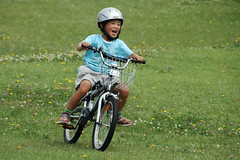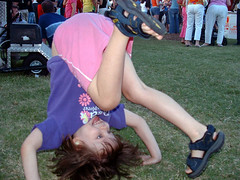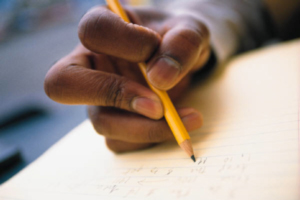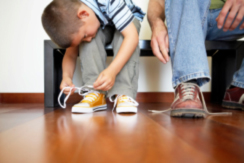Motor Development
Although motor development (see full Glossary) slows down, children continue to refine their fine and gross motor skills. They are, in fact, quite energetic and need to move around quite a bit during the day.
GROSS MOTOR
(see full Glossary)
Most children at this age can:
- ride a bicycle without training wheels (Fig. 1);
- run very well;
- stand on one foot for as long as a minute;
- hop forward on one foot;
- catch small and large balls from several feet away;
- jump rope (Fig. 2);
- combine two or more motor movements (For example: run and kick a ball at the same time);
- perform somersaults (Fig. 3) and cartwheels (Fig. 4).
Figure 1. Riding a bicycle without training wheels
Figure 2. Jump rope
Figure 3. Somersault
Figure 4. Cartwheel
FINE MOTOR
(see full Glossary)
Most children at this age can:
- write legibly;
- copy words with ease;
- hold a pair of scissors and cut complex shapes with it (for example, letters);
- use the tripod position (Fig. 5) when holding a pencil or pen;
- stay inside the lines when coloring;
- type (Fig. 6) sentences on a computer keyboard;
- use an eraser without tearing the page;
- tie a knot;
- tie shoelaces (Fig. 7);
- have good posture (Fig. 8) when writing.
Figure 5. Tripod position
Figure 6. Typing
Figure 7. Tying shoelaces
Figure 8. Good posture
Did you know?
- Children at this age engage in a lot of intense activities and require an average of ten hours of sleep every night.
- A child’s muscles are much more coordinated at this age and he or she has good balance.








0 comments
Kick things off by filling out the form below.
Leave a Comment